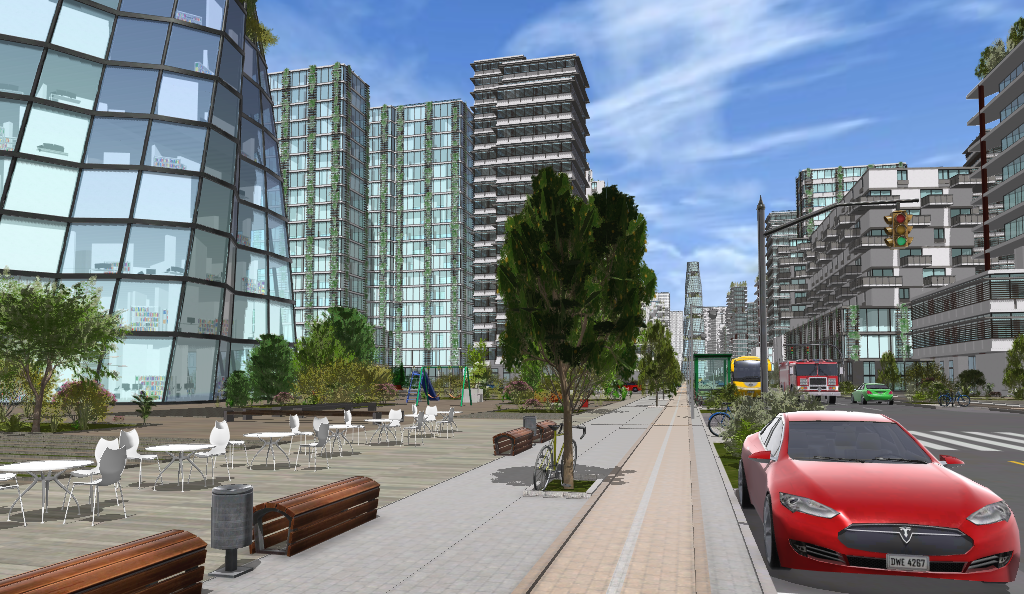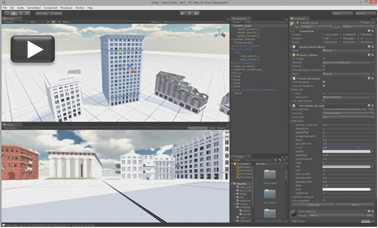

- #CITYENGINE SDK HOW TO#
- #CITYENGINE SDK INSTALL#
- #CITYENGINE SDK ARCHIVE#
- #CITYENGINE SDK FULL#
- #CITYENGINE SDK SOFTWARE#
#CITYENGINE SDK HOW TO#
stldec: demonstrates how to write a custom decoder for the STL geometry format.stlenc: demonstrates how to write a custom encoder, in this case for the STL geometry format.prt4cmd: a simple command line utility to apply rule packages onto initial shapes and generate models.Each example contains a README with detailed instructions how to build and use it. This repository contains a number of source code examples. The final directory layout should look like this: /esri-cityengine-sdk/
#CITYENGINE SDK ARCHIVE#
#CITYENGINE SDK INSTALL#
This document explains how to install the CityEngine SDK and how to work with the source-code examples contained in this repository. Please refer to the licensing section below for more detailed licensing information. Commercial use requires at least one commercial license of the latest CityEngine version installed in the organization. The CityEngine SDK is free for non-commercial use. Another use case example could be a specific cultural heritage 3D application which automatically generates detailed 3D models of temples based on input attributes. Palladio includes PRT and therefore extends Houdini with the procedural geometry engine of CityEngine. An interesting use case example is Palladio, a plugin for SideFX’s Houdini software.
#CITYENGINE SDK FULL#
With the SDK you can integrate PRT in your own 3D applications taking full advantage of the procedural geometry generation without running CityEngine. For example, PRT can generate - based on given rules - a 3D model of a building out of a parcel polygon.

PRT takes as input an initial geometry and then applies a given rule package (= CGA rules authored in CityEngine) to generate more detailed 3D geometry as output. The core of CityEngine is its unique geometry generation engine, called Procedural Runtime (PRT). STL support is not provided out-of-the-box in CityEngine, but you can develop your own STL exporter as described below.ģD apps which need a procedural geometry engine. A simple use case example is 3D printing where the STL geometry format is often needed. This means the SDK enables you to develop CityEngine plugins to read or write additional 3D and image formats or your own proprietary 3D data format. The CityEngine SDK can be used for the development of:Ĭustom importers and exporters for CityEngine.
#CITYENGINE SDK SOFTWARE#
Please refer to the licensing section below for more detailed licensing information.This is the official site for the SDK of Esri CityEngine, a 3D city modeling software for urban design, visual effects, and VR/AR production. Redistribution or web service offerings are not allowed unless expressly permitted. PyPRT is free for personal, educational, and non-commercial use. Moreover, the output 3D geometries can either be used from within Python or exported to another format by using one of the built-in PRT encoders. Different input attributes can be applied on each of these initial shapes. PyPRT allows generating 3D models on multiple initial geometries. RPK examples can be found below and directly used in PyPRT. RPKs contain the CGA rule files that define the shape transformations, as well as supplementary assets. PyPRT 3D content generation is based on CGA Rule Packages (RPK), which are authored in CityEngine. For example, when modeling buildings, PyPRT users can easily change the parameters of the generated buildings (like the height or the shape) by changing the values of the CGA rule input attributes.

This allows for efficient and customizable geometry generation. Given an initial geometry, on which to apply the CGA rule, the 3D generation is procedurally done in Python (Python script, Jupyter Notebook, …). Users, such as Python developers, data scientists, or GIS analysts, can efficiently make use of CityEngine Rule Packages (RPK) in order to create 3D geometries stored as Python data structures, or to export these geometries in another format (like OBJ, Scene Layer Package, … ).


 0 kommentar(er)
0 kommentar(er)
